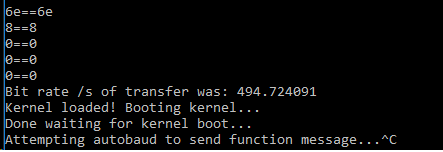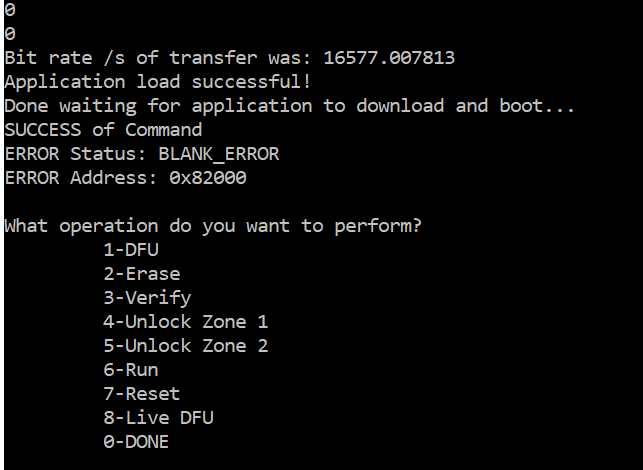Hi guys.
I'm new to TI dev boards. Currently I am trying to flash a F28377S dev board using SCI.
Tried to follow this example implementation  .
.
Short:
- imported blinky example into workspace + built it + processed *.out file to *.txt using "hex2000.exe -boot -pdb -sci8 -a -o OUTfile.txt INfile.out"
- imported flash_programming into workspace+ built it + processed *.out file to *.txt using "hex2000.exe -boot -pdb -sci8 -a -o OUTfile.txt INfile.out"
- as these are examples I suggested everything to be straight forward.
- prepared the board to boot to SCI (dipswitches)
- started the SCI flash using "serial_flash_programmer.exe -d f2837xS -k flash_programming.txt -a blinky.txt -p COM4 -b 9600 -v
Sadly there seems to be something wrong. As you can see the Kernal seems to be loaded but does not autobaud any more.
Maybe there is someone out there with a good idea how to solve this.
Is there something to change in a .cmd or header file? Do I have to change some build options?
Thanks a lot.
Lukas




